There's a particular kind of thrill that comes from venturing where you're not supposed to go. Dead Horse Bay in Brooklyn isn't a destination for the faint of heart—it's a place that demands a certain audacity, a willingness to push past the "No Trespassing" signs and overgrown paths that seem to dare you to turn back. To get there, you must navigate a landscape that is intentionally overgrown. A path that is no longer welcoming. The constant threat of potential arrest by park rangers dances at the edge of your consciousness.
The beach itself is a time capsule—a graveyard of discarded objects from the 1950s, where a poorly capped landfill nearby has been slowly surrendering its treasures to the shoreline. Each high tide reveals fragments of forgotten lives.
I'm holding Louis Shapiro's insurance business card—a calendar from 1952. Who was Louis Shapiro? What dreams did he hold? He worked at 1440 Broadway, a address that today is plagued by the vacancy as many Midtown office towers have been. Closely observing the card, I discovered something interesting. The building address pre-dated today’s zip codes: 1440 Broadway, New York, 18, New York.
In 1963, zip codes were introduced to the public incorporating the existing zone numbers into today’s modern day zip codes. NYC was assigned zip code prefixes of 100, 101 and 101 so today, 1440 Broadway sits in zip code 100 + 18 or 10018.
I found not one, but two of these Rosbro Santa boot ornaments on the beach. In the post-World War II economic boom, these mass-produced ornaments represented a nation transforming from wartime restrictions to consumer celebration.
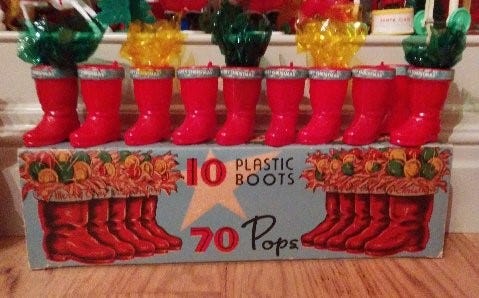
Children would receive them as stocking stuffers, teachers would hand them out to students, each little Santa boot a miniature promise of joy in an era of renewed optimism.
A Shenango China plate caught my eye, its underside adorned with an illustration of an American Indian. This piece speaks to another forgotten story of American manufacturing. Once a proud producer of dinnerware that graced the tables of both ordinary homes and heads of state, Shenango China was a testament to New Castle, Pennsylvania's industrial pride. The men who started the first potteries in New Castle did so, not because of any clay deposits in the area, but rather because of the soft coal available which was used to fire the kilns. The company was closed in the late 1980s after a series of acquisitions and reorganizations.
A small brown plastic horse—likely from the Marx toy company—tells yet another story of American innovation. Louis Marx, dubbed the "Toy King," built an empire on a simple philosophy: give customers more toy for less money. By the 1950s, his company was producing plastic toys that defined childhood for generations.
Even this old glass glue bottle tells a tale. Once a staple in classrooms across America, this type of glue was used by generations of schoolchildren. Kids would press the bottle, watching carefully as a perfect drop of glue emerged—sometimes wrestling with the clogged tip, creating sticky memories that stuck around long after the project was complete.

These objects may appear to be trash but really they’re artifacts. Whispers of a world that existed before smartphones and instant everything
I know the risks. Trespassing. Potential arrest. Cuts from broken glass. But some discoveries are worth the risk. What boundaries do you push in the pursuit of something more?
PS: This is my second newsletter about Dead Horse Bay. My first one is here.
Words of the Week
“Do not go where the path may lead, go instead where there is no path and leave a trail.” —Ralph Waldo Emerson
Photo of the Week
A photo I took while waiting for the 7-train in Long Island City on a rainy morning. A window to windows caught my eye.


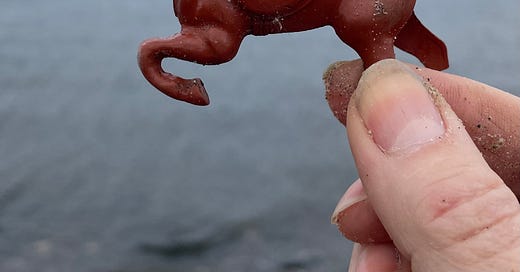


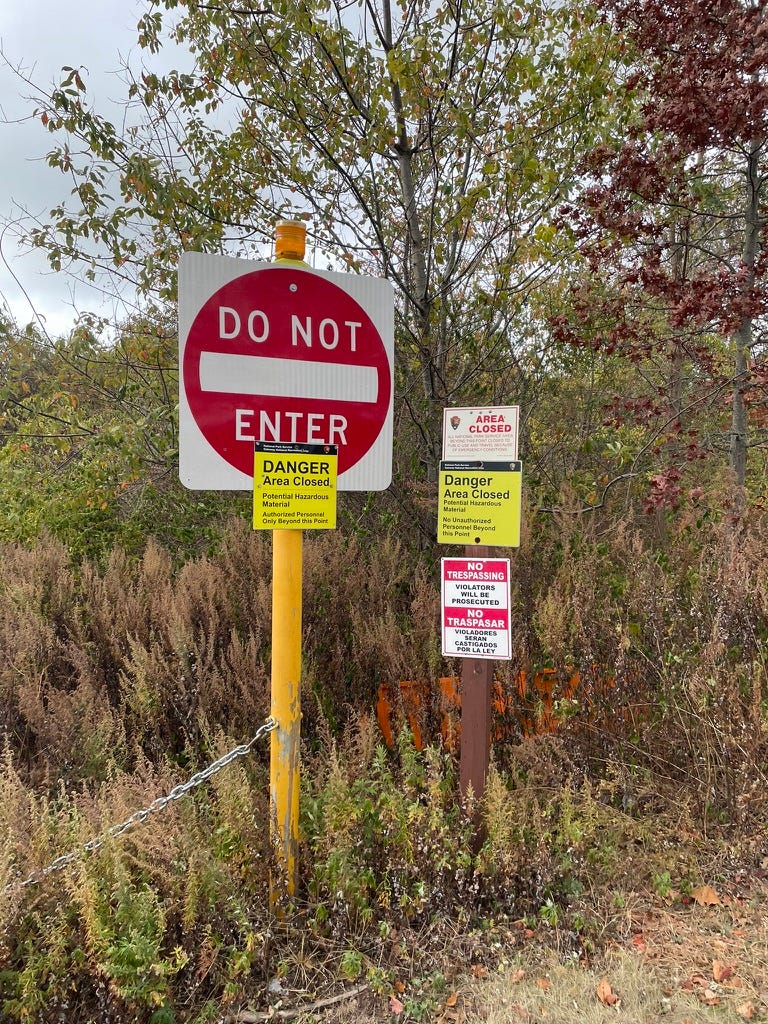
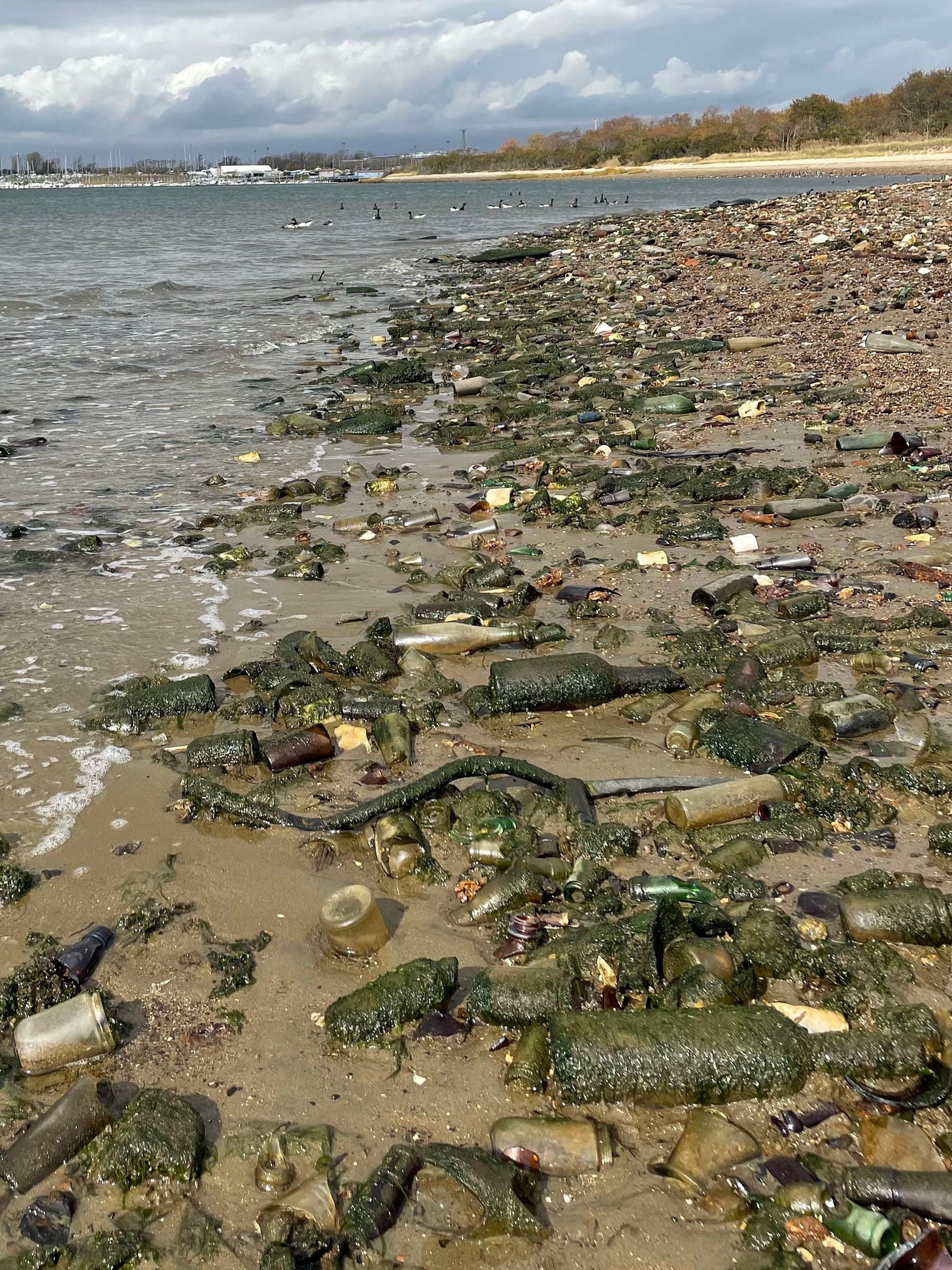
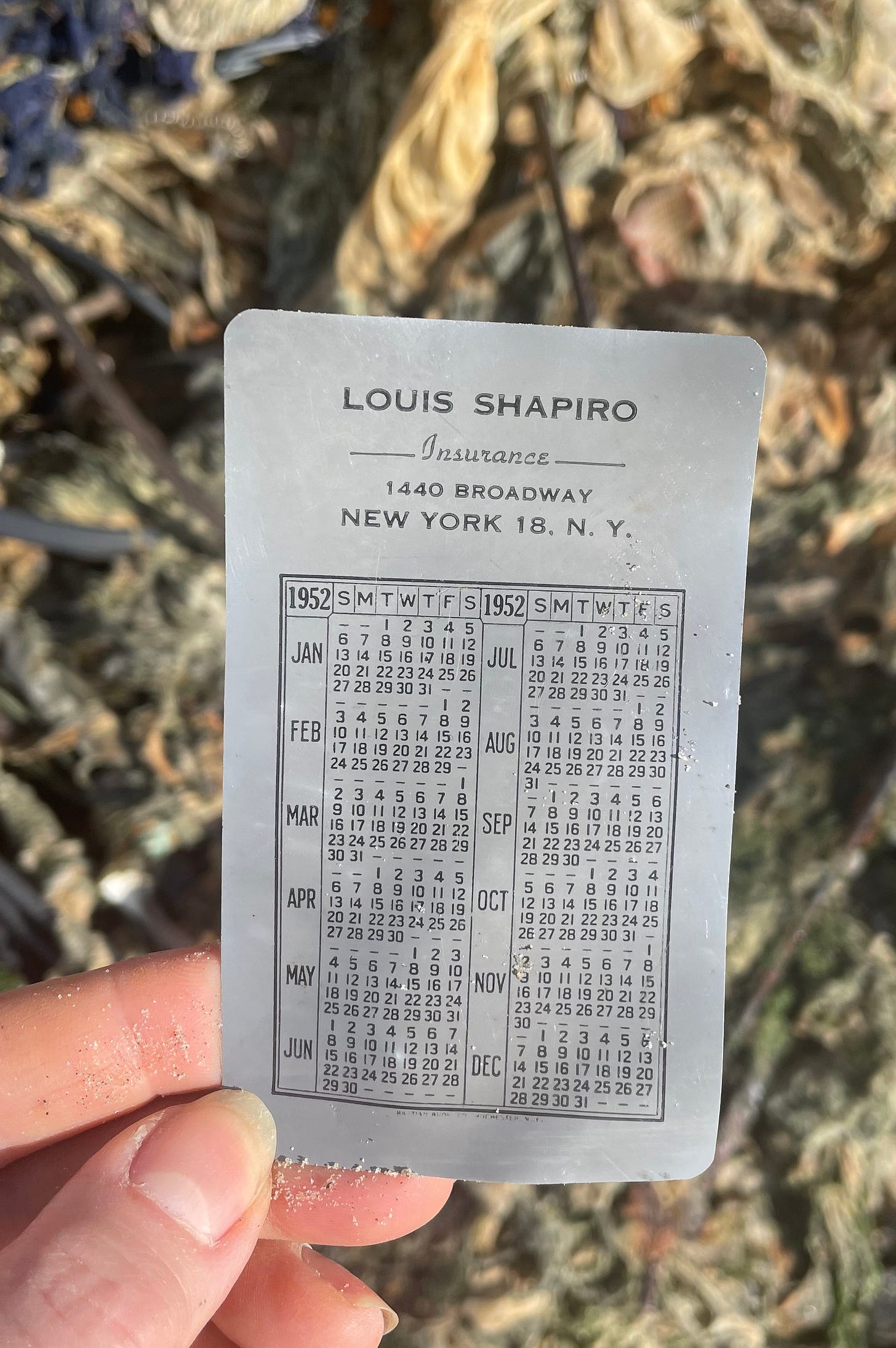
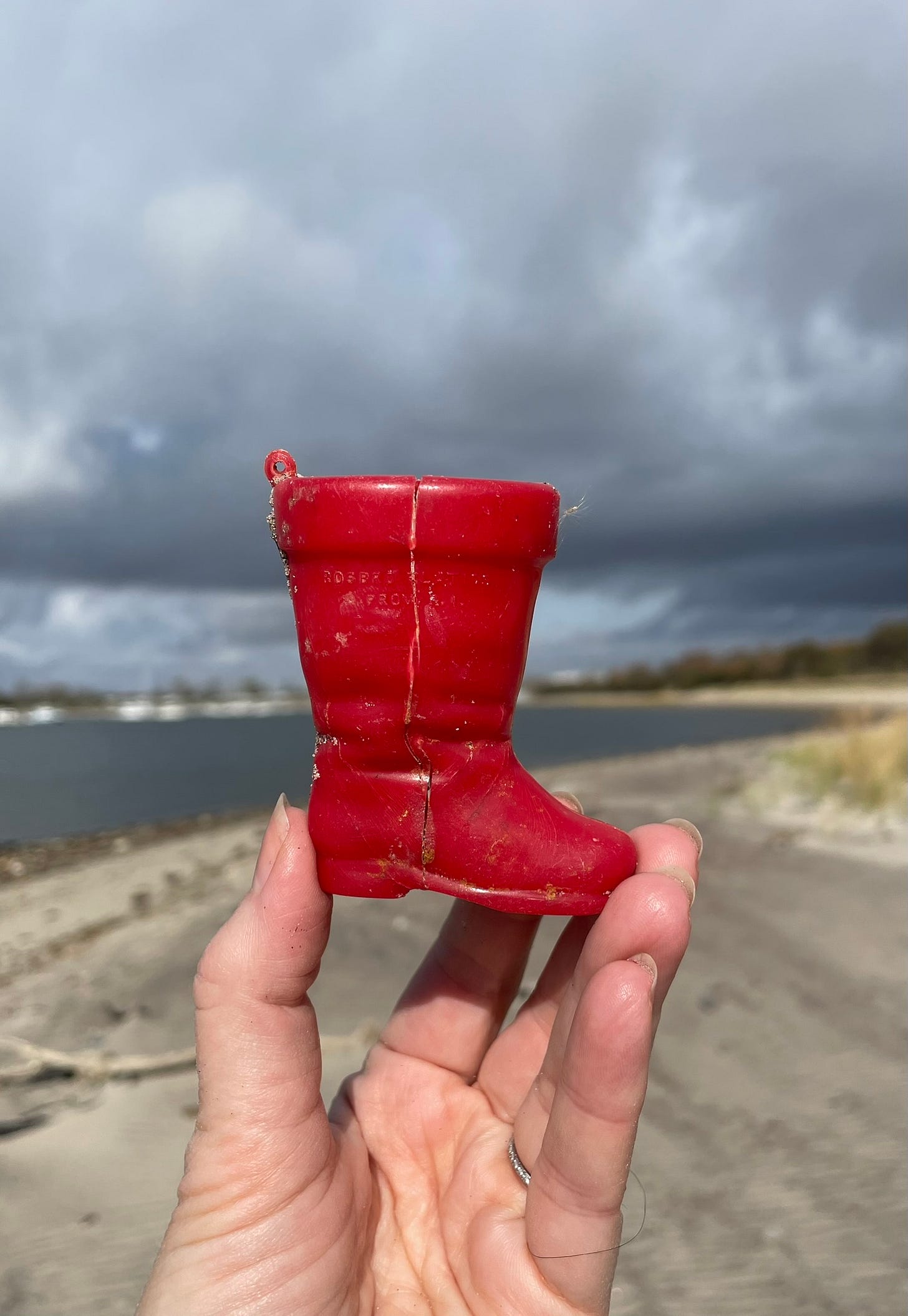
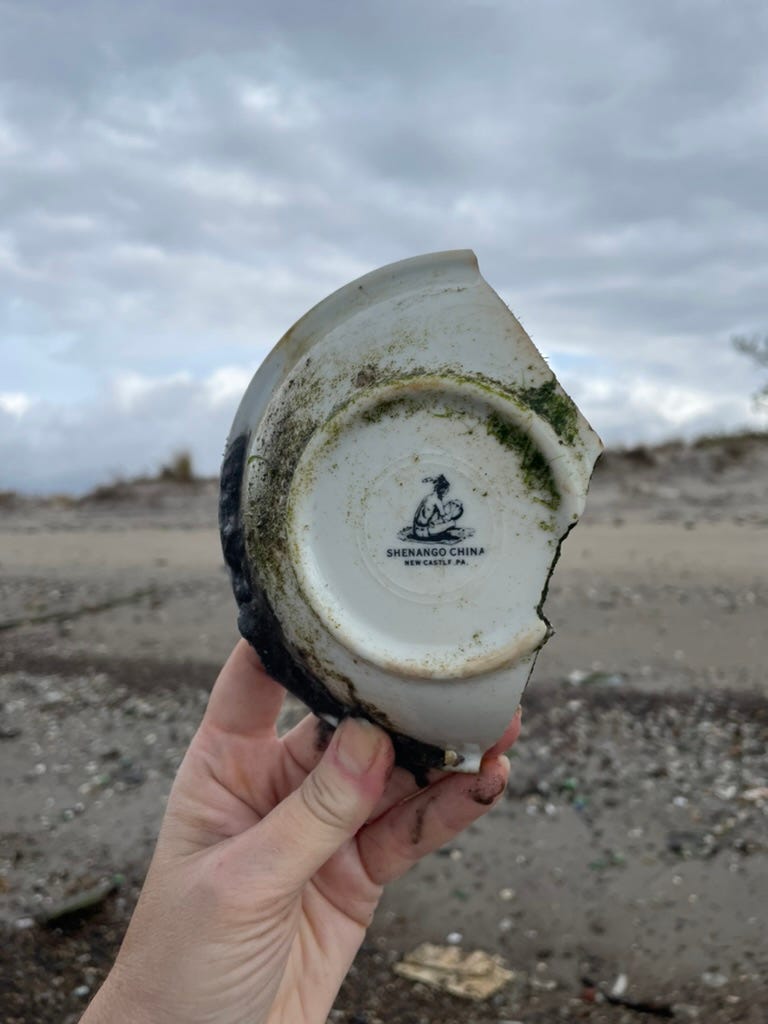

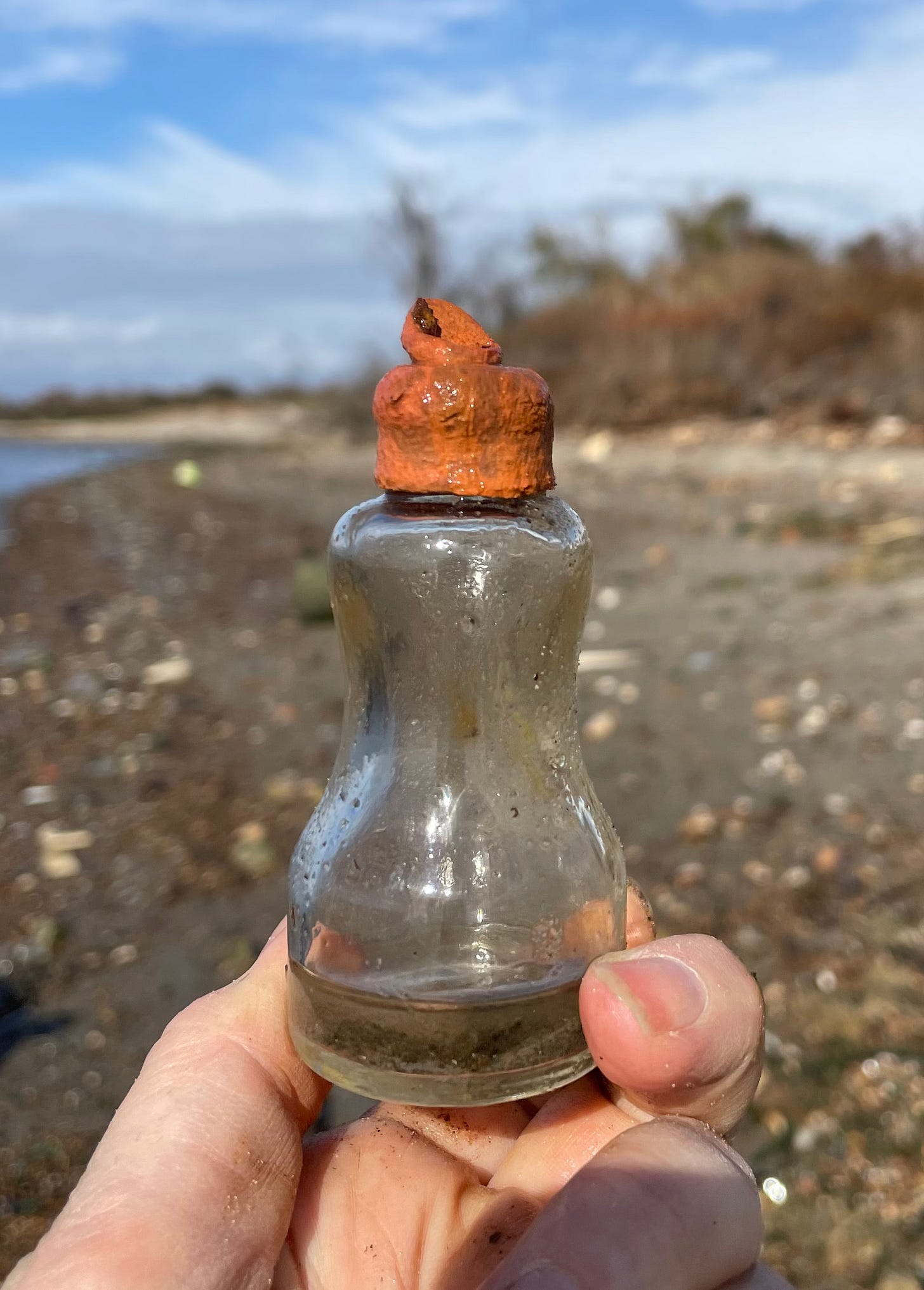

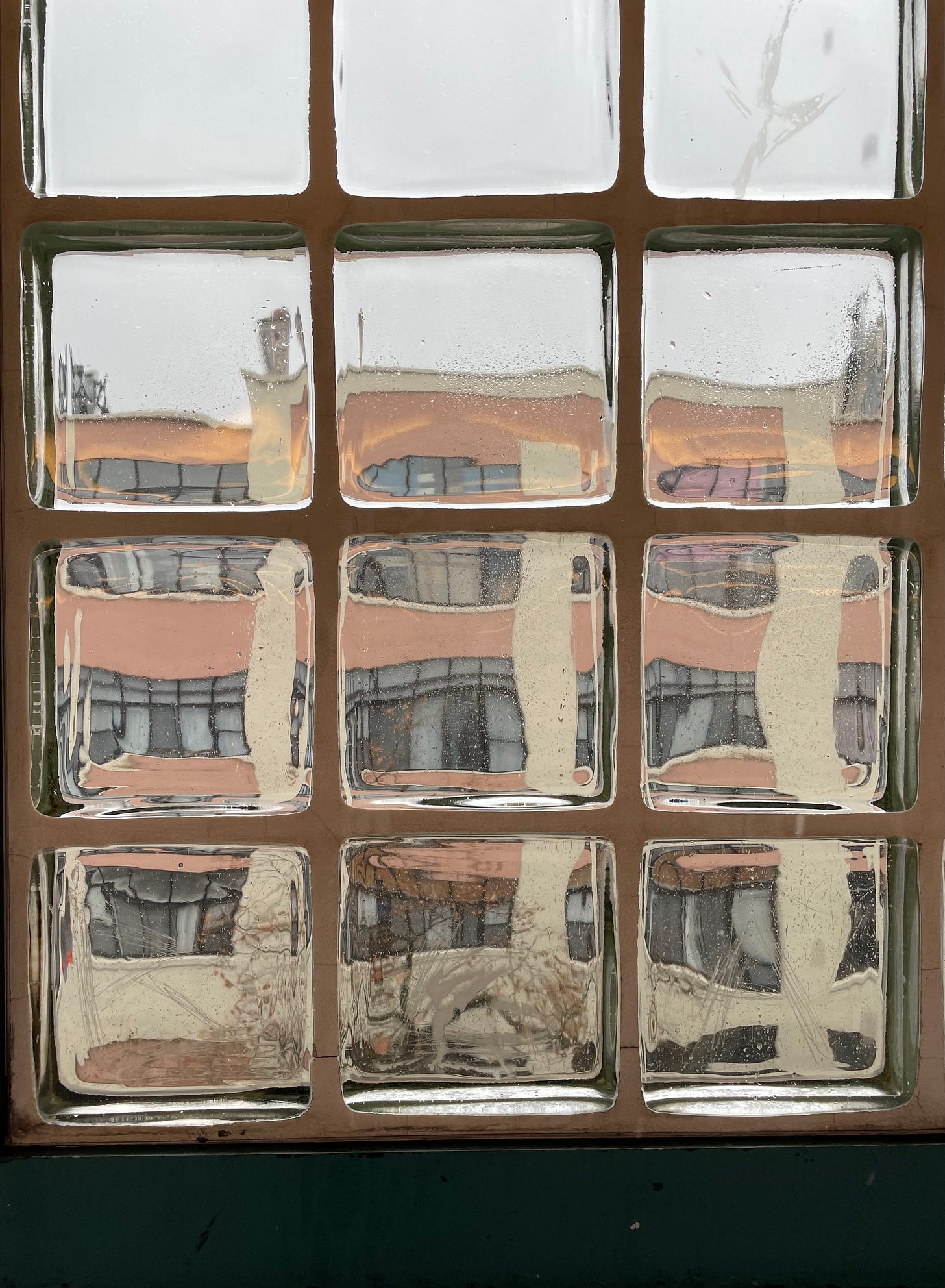
Lia, I love that you take the time to research and connect the present to the past. I am fascinated by those little red boots.
Fascinating! I’m curious about what happens to all the stuff that washes up on the beach…does it get cleaned up?